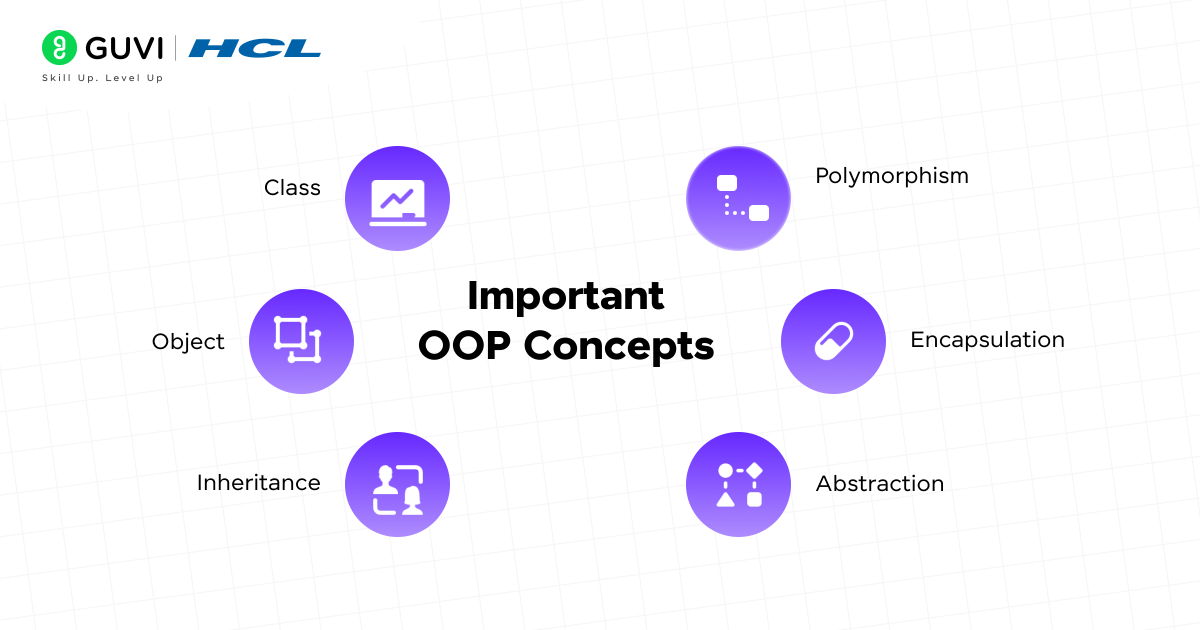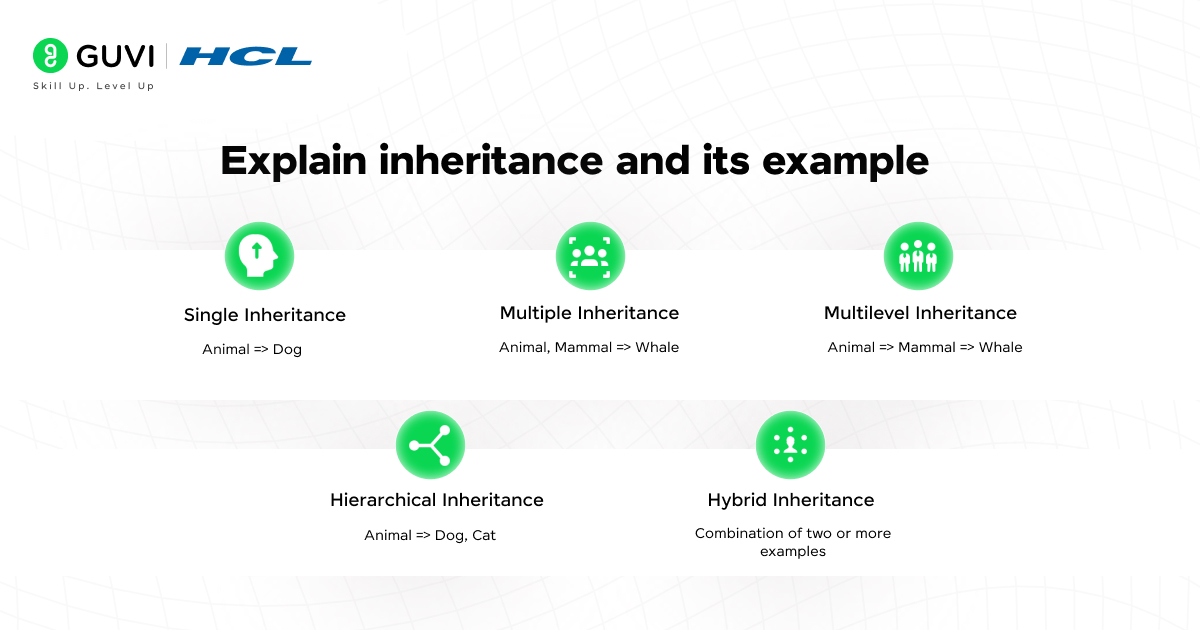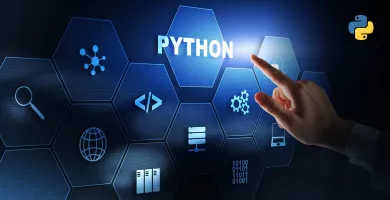
Top 30 Object Oriented Programming Interview Questions and Answers
Oct 10, 2025 6 Min Read 4570 Views
(Last Updated)
Object-oriented programming concepts are crucial for technical role-based interviews. If you want to become a software engineer, full-stack developer, application developer, machine learning engineer or any other role, knowing Object Oriented Programming is essential. Are you nervous about what questions you expect during the interview? We got you covered!
This blog covers the top 30 object-oriented programming interview questions and answers. Irrespective of the programming language you know, the questions will remain the same. Let’s get started!
Table of contents
- Important OOPs Concepts
- Top 30 Object-Oriented Programming Interview Questions and Answers
- Fresher Level Questions
- Intermediate Level Questions
- Expert Level Questions
- Scenario Based Questions
- Conclusion
- FAQs
- Q1. Which programming languages should I learn first?
- Q2.What’s the best way to practice coding?
- Q3. Do I need to know system design as a fresher?
- Q4. How important is communication during the interview?
Important OOPs Concepts

This section covers important object-oriented programming concepts that are frequently asked in the interview. There are a few principles in object-oriented programming that are useful in organizing and reusing the code. Let’s dig deep into each principle.
- Class: It is a blueprint for creating objects that defines attributes and behaviors for an object.
- Object: It is an instance of a class that contains data and functions.
- Inheritance: It is a mechanism where one class acquires properties from another class/
- Polymorphism: It is the ability to take many forms.
- Encapsulation: It bundles the data and methods into a single unit and restricts access to internal details.
- Abstraction: It hides the complex implementation and shows only the essential.
Mastering any one of the programming languages is a must. If you’re confused about which language to choose, start exploring HCL Guvi’s FREE E-book on Python: A Beginner’s Guide to Coding & Beyond. It is a great start towards your DSA and software developer journey.
Top 30 Object-Oriented Programming Interview Questions and Answers
In this section, we will look into the top 30 object-oriented programming interview questions and answers. This covers all the necessary topics from OOPs. Let’s look into the frequently asked questions.
Fresher Level Questions
- What are the differences between structured programming and object-oriented programming?
| Structure Programming | Object Oriented Programming |
| It is a top-down approach | It is a top-down approach |
| It focuses on functions and procedures | It focuses on objects and classes |
| It restricts reusability. | It supports high reusability using classes and inheritance |
| It is less secure | It is more secure due to encapsulation |
| Example: C, Pascal, Fortran | Example: Java, C++, Python |
- What is OOP?
Object-oriented programming (OOP) is a programming paradigm that is used to design code around objects, which are instances of classes. These objects contain data, attributes, and methods. It helps in structuring complex programs, code reusing, scalability, and maintainability.
- What are the 4 main principles of OOP?

There are four main principles of OOP are:
- Encapsulation: It bundles data and methods within one unit and restricts direct access to some of the object’s functionality.
- Abstraction: It hides the complex implementation details and shows only the essential features of the object.
- Inheritance: It enables inherited properties from the parent class to the child class, promoting code reuse.
- Polymorphism: It allows objects to be treated as an instance of their parent class.
- What are some common OOP programming languages?
Some of the widely used object-oriented programming languages include:
- Java
- Python
- C++
- C#
- Ruby
- Swift
- What are Classes and Objects? Explain with real-world examples
Classes are the blueprints for creating objects. It defines attributes and methods that describe the behavior of an object.
An object is an instance of a class. Classes contain the blueprint where objects hold the actual values for the attributes and can perform the methods.
For example, Animal is a class that describes what an animal is and its general qualities, such as breathing, eating, and sleeping. A specific animal, such as a dog, cat, is an object of the animal class.
- Explain inheritance and its types.

Inheritance is the process of inheriting properties and behaviour from one class (parent or base class) to another class (child or derived class). It is used for code reuse, easy maintenance, and hierarchical establishment.
There are five types of inheritance in OOP. They are,
| Type | Description | Example |
| Single Inheritance | One child class inherits from one parent class. | Animal => Dog |
| Multiple Inheritance | A class inherits from more than one parent class. | Animal, Mammal => Whale |
| Multilevel Inheritance | A combination of two or more examples | Animal => Mammal => Whale |
| Hierarchical Inheritance | Multiple child classes inherit from a single parent class. | Animal => Dog, Cat |
| Hybrid Inheritance | A combination of two or more types of inheritance. | Combination of two or more examples |
- What is a constructor and its types?
A constructor is a special function of a class that is automatically called when an object of a class is created. Mostly, it is used to initialize objects and variables.
There are three types of constructors. They are,
- Default constructor: It does not take any arguments.
- Parameterized constructor: It supports parameters to initialize data.
- Copy constructor: It creates a new object by copying an existing object.
- What is the difference between compile-time and run-time polymorphism?
| Compile-Time Polymorphism | Run-Time Polymorphism |
| It is also known as static polymorphism. | It is also known as dynamic polymorphism. |
| This can be achieved by function and operator overloading. | This can be achieved by using virtual functions and inheritance. |
| It provides slower execution because it is known at run time. | It provides slower execution because it is known at the run time. |
- What are access modifiers?

Access modifiers or access specifiers define the visibility of class attributes and methods. In general, there are three types of access modifiers. They are,
- Public: The attribute or method can be accessed from anywhere, i.e., from both within and outside the class.
- Private: The attribute or method can be accessible within the class only.
- Protected: The attribute or method can be accessible within the class and its derived classes.
- What are the advantages and disadvantages of OOP?
Advantages:
- Code organization using classes and objects.
- Code reusability using Inheritance.
- It is well-suited for complex programs.
- Code isolation using Encapsulation.
Disadvantages:
- It can increase the complexity of small programs.
- The concepts are hard to understand for beginners.
- Poor design can lead to tightly coupled code, making maintenance harder.
- Developers may complicate the design by creating unnecessary classes.
Intermediate Level Questions
- What are virtual functions?
A virtual function is a member function in the base class that you can override in a derived class. This can be defined using virtual keywords. It enables dynamic polymorphism, where the correct function to call is determined at runtime based on the object type.
- What are the differences between virtual and pure virtual functions?
| Virtual Function | Pure Virtual Function |
| It is declared in the base class. | It has no body and ends with = 0. |
| It mainly supports polymorphism and is optional to override the function. | It must be overridden in the derived class. |
| It can be present in a normal class. | It must be declared as an abstract class. |
virtual void show() {} | virtual void show() = 0; |
- What is an abstract class, and when do you use it?
An abstract class is a class that contains at least one pure virtual function. It is used to define a base interface for derived classes and cannot be instantiated directly.
When?
When you want to define a common interface across multiple derived classes and want to enforce the implementation of specific methods in child classes.
- What is the difference between overloading and overriding?
Overloading is a compile-time polymorphism in which an entity can have multiple implementations with the same name. Example: Method and operator overloading.
Overriding is a runtime polymorphism in which an entity has the same name but a different implementation during execution. Example: Method overriding.
- What is an exception?
An exception is a special event that happens during the execution of a program at runtime. It often brings the execution to a halt. The reason for the exception is mainly due to a position in the program, where the user wants to do something for which the program is not designed, like undesirable input.
- What is Exception Handling?
Exception handling is a method to handle the program when the software or code fails to execute its work. Before failing, the exception handling will execute and prevent it from stopping. The most common exception handling method is to use a ‘try-catch block‘.
- What is garbage collection?
Each object consumes memory to initiate and function. So if the object memories are not handled perfectly, it may lead to memory-related errors, and the system might fail.
To avoid these issues, garbage collection is used to handle the memory in the program. Through garbage collection, the unwanted memory is freed up by removing the objects that are no longer needed.
- What is encapsulation?
Encapsulation is defined as the mechanism that binds the data and code together. It prevents data from being accessed by the code outside of the block. In other words, it hides the data from other classes, which is similar to data hiding.
- What is polymorphism?
Poly means many and morphism means forms. In simple words, polymorphism means the ability to take many forms. There are two types of polymorphism: method overloading and method overriding.
Example:
add(2);
add(2, 3);Expert Level Questions
- Does Java support multiple inheritance?
No, Java doesn’t support multiple inheritance. It is to avoid ambiguity and complexity, such as the diamond problem. This means a class in Java cannot extend more than one class.
Are you interested in learning more about Java? Enroll in HCL Guvi’s professional certified Java Fullstack Development Course. It covers various topics from the basic level such as data types, control structures, OOP to advanced level development using frameworks like Springboot.
- What is a destructor?
Opposite to a constructor, which is used to initialize the objects and allocate memory space to them, destructors are used to free up the resources and memory allocated using constructor. Destructors are automatically called when an object is destroyed.
- What is the difference between struct and class in C++?
struct | class |
| The struct is public by default. | The class is private by default. |
| It is a value typed. | It is a reference type. |
| It does not support destructors. | Can have a destructor. |
Example:struct A { int x; // public by default}; | Example:class B { int x; // private by default}; |
- What is a friend function?
A friend function is a special function in C++ that is not a member of a class but is granted access to the private and protected members of that class. It is declared using the keyword friend inside the class definition, but defined like a regular function outside the class.
- What are static and dynamic binding?
| Static Binding | Dynamic Binding |
| It is also known as early binding | It is also known as late binding |
| It binds with the class during collection time | It binds with the class during execution time |
| Example: Method overloading | Example: Method overriding |
- Can you call the base class method without creating an instance?
Yes, it is possible to call the base class without instantiating if it is a static method or the base class is inherited by some other subclass.
- How is data abstraction accomplished?
It is a process of hiding the internal working details and showing only the essential features to the user.
In Java, it can be achieved using abstract classes and interfaces and in C++ it can be achieved using pure virtual functions.
Scenario Based Questions
- Define a class named Student that has name, id and age. Initiate three objects with names = {A, B, C}, id = {321, 543, 654} and ages = {19, 20, 19}.
| class Student: def __init__(self, name, student_id, age): self.name = name self.student_id = student_id self.age = age def display_info(self): print(f”Name: {self.name}, ID: {self.student_id}, Age: {self.age}”) student1 = Student(“A”, 321, 19) student2 = Student(“B”, 543, 20) student3 = Student(“C”, 654, 19) student1.display_info() student2.display_info() student3.display_info() |
- What will be the output of the below code?
| public class Demo{ public static void main(String[] arr){ System.out.println(“Main1”); } public static void main(String arr){ System.out.println(“Main2”); } } |
Output:
Main1
- Design a class Rectangle with length and width. Add a method to compute area and perimeter. Then extend the concept by creating a Square class that inherits from Rectangle.
| #include <iostream> using namespace std; class Rectangle { protected: double length; double width; public: Rectangle(double l, double w) : length(l), width(w) {} double getArea() { return length * width; } double getPerimeter() { return 2 * (length + width); } }; class Square : public Rectangle { public: Square(double side) : Rectangle(side, side) {} }; int main() { Rectangle rect(4.5, 3.0); Square sq(5.0); cout << “Rectangle Area: ” << rect.getArea() << “, Perimeter: ” << rect.getPerimeter() << endl; cout << “Square Area: ” << sq.getArea() << “, Perimeter: ” << sq.getPerimeter() << endl; return 0; } |
- Create a class BankAccount with account_number, account_holder, and balance. Add methods deposit(amount), withdraw(amount) (with insufficient balance check), and get_balance().
| class BankAccount { private int accountNumber; private String accountHolder; private double balance; public BankAccount(int accountNumber, String accountHolder, double initialBalance) { this.accountNumber = accountNumber; this.accountHolder = accountHolder; this.balance = initialBalance; } public void deposit(double amount) { balance += amount; } public void withdraw(double amount) { if (amount > balance) { System.out.println(“Insufficient balance!”); } else { balance -= amount; } } public double getBalance() { return balance; } } public class Main { public static void main(String[] args) { BankAccount account = new BankAccount(101, “Alice”, 1000.0); account.deposit(500); account.withdraw(300); System.out.println(“Current Balance: ” + account.getBalance()); account.withdraw(1500); // Will print “Insufficient balance!” } } |
Conclusion
In conclusion, this blog is the perfect last minute guide to ace your Object Oriented Programming interview. It covers OOP topics ranging from classes, objects, inheritance, polymorphism, abstraction, encapsulation and exception handling. Mastering these concepts will not only help you in acing software developer roles related interviews but also help you in other roles that require system designing. Happy Learning!
FAQs
Q1. Which programming languages should I learn first?
Start with beginner-friendly languages like Python or JavaScript; then explore Java, C++, or others based on your goals.
Q2.What’s the best way to practice coding?
Use coding platforms like LeetCode, HackerRank, or Codecademy, and build real-world projects to apply your skills.
Q3. Do I need to know system design as a fresher?
Not in detail. For freshers, companies may ask basic design questions (e.g., how would you design a simple library system or a login page). Understanding fundamentals is enough.
Q4. How important is communication during the interview?
Very important! Explaining your thought process clearly, even if you don’t get the perfect answer, shows your problem-solving skills and how you approach challenges.




































Did you enjoy this article?